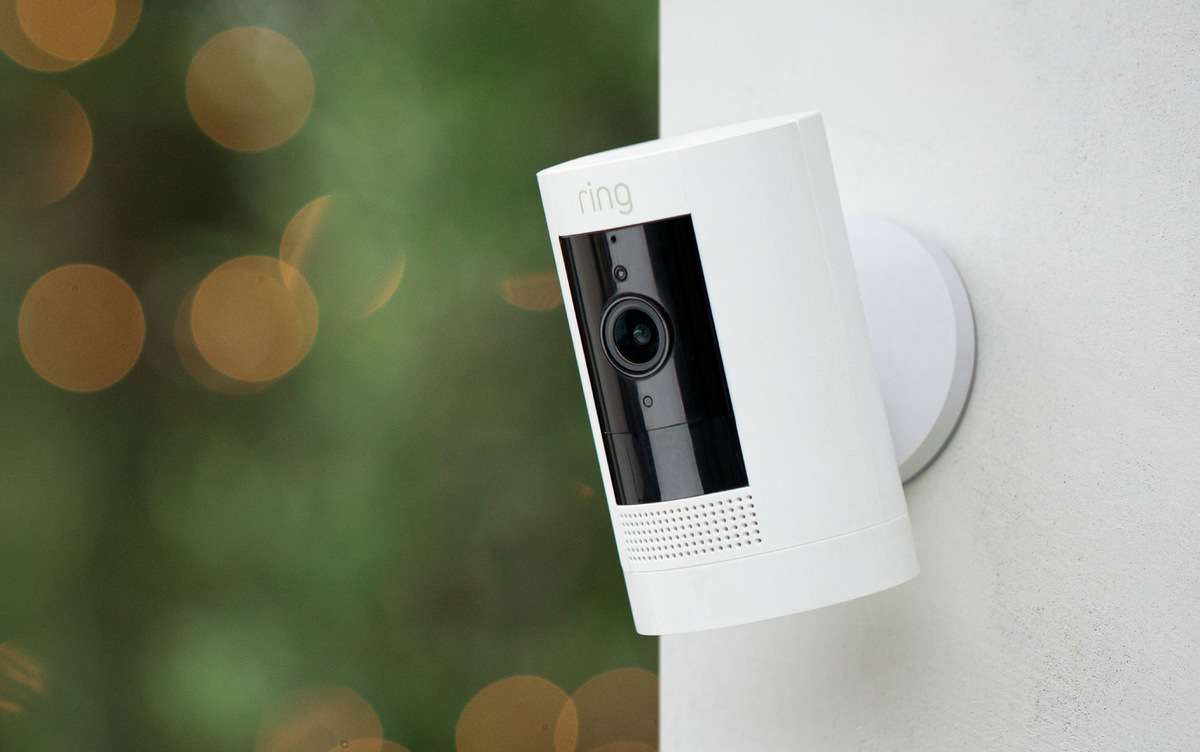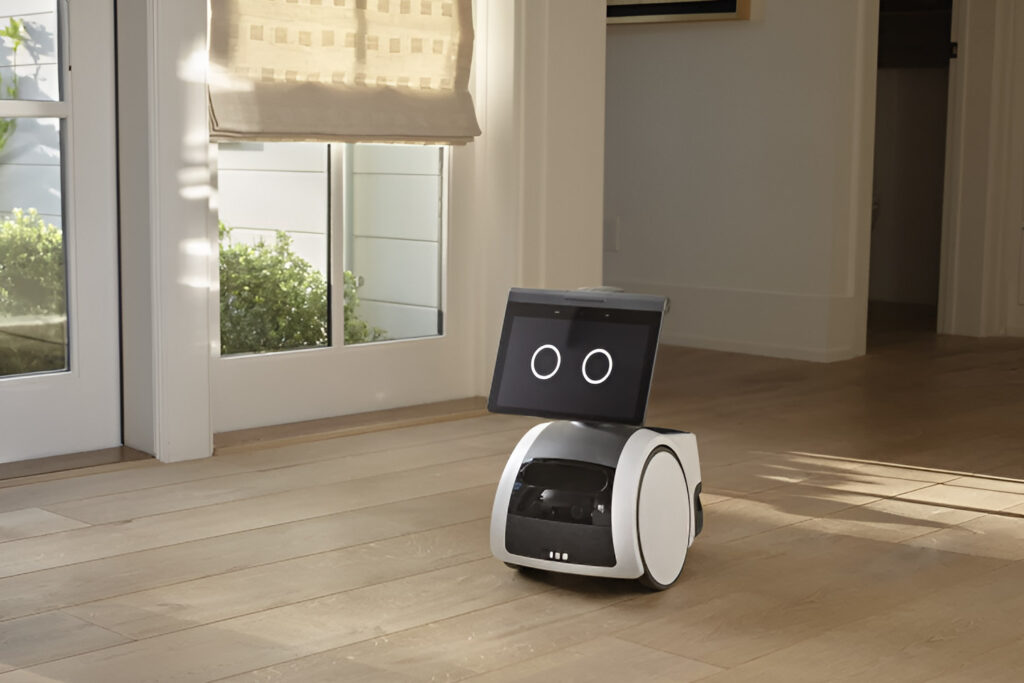The Ring Stick Up Cam has undergone various redesigns since then, along with being released as Solar Powered and ‘Elite' (power over Ethernet) versions. But the Ring Indoor Cam seems to offer the same or more features, for a cheaper price. So does this mean that the Stick Up Cam is discontinued?
Get A FREE Home Security Quote Now
No, the Ring Stick Up Cam is not discontinued and Ring actually released new versions of it a year ago. However if you want to use the camera in an indoor setting, there are now better options available to you.
Ring Stick Up Cam history

The Ring Stick Up Cam was Ring's first smart camera, and its second ever product: the Ring Doorbell 1 being the first. Whilst this was only a few years ago, it was one of the earliest smart cameras on the market and full HD recording, streamed to the cloud, was a big step forward at the time.
This also featured two-way talk (which was useful to ward off burglars, and also speak to visitors when you're out), but it had some shortcomings. As a result, it had a rounder design, better motion detection and wired/solar powered options.
A year or so later, it received further design changes to bring it to its latest 3rd generation design – as pictured above. It has better speaker and microphone capability (this can be seen by the front-facing speaker holes at the front, below the black camera section), came with a base-price cut to $99, and it also introduced a power over Ethernet option.
So Ring's first smart camera has undergone three revisions over half a decade, making it one of the earliest – and still most capable – WiFi, full HD smart cams on the market.
Current Ring Stick Up Cam range
The Ring Stick Up Cam range currently has a few different options for how to power it:
- Battery: the Ring Stick Up Cam Battery model costs $99 and – as its name suggests – is battery powered. As a result of this, it doesn't support fully adjustable motion zones (due to the need to save battery power). Instead, it has PIR-based sensors and the option to choose 1-3 areas for your Ring Cam to focus on for detection.
- Plug-in: this model can be plugged into a wall socket, and it also costs $99. The benefit of plugging it in is that its motion detection is better: your cam will use pixel-based detection, allowing you to customize the motion detection to a greater degree.
Of course, if you don't have a wall socket nearby, this item may not be suitable for you. - Solar power: you can buy a Ring-produced solar panel, and position this near your Stick Up Cam. All together, the Stick Up Cam Solar (i.e. the cam and the solar panel) costs just under $150.
The camera has a battery backup for the times when there's no sun, allowing your Ring camera to stay active. - Elite (PoE): this version of the Stick Up Cam uses power over Ethernet to provide both power and internet data to the device, meaning that it's the only non-WiFi camera in the Stick Up Cam range.
It costs $199 which puts it closer in price to conventional professional grade video-over-IP security cameras, but still with all the smart features that Ring cameras offer.
To sum up the differences:
| Stick Up Cam Battery | Stick Up Cam Plug-in | Stick Up Cam Solar | Stick Up Cam Elite | |
| Power method | Battery | Wall socket | Solar, with battery backup | Power over Ethernet |
| Very flexible motion detection | No | Yes | No | Yes |
| Price | $99 | $99 | $149 | $199 |
As you can tell, the main difference for each model within the Ring range is how it's powered. But following on from this, how the motion detection works varies – and this is crucial because Ring cameras don't record 24/7, they only record when they detect motion.
Ring Indoor Cam: does this make the Stick Up Cam redundant?

I recently bought an Echo Show and as part of the Amazon deal, I could purchase a Ring Indoor Cam for just $20 – bargain!
The Indoor Cam was perfect for me because I wanted to plug a Ring camera into a wall socket, in an indoor location. But of course, if I wanted to mount a camera outdoors (where the Ring camera would get wet) or high up on my roof-line (where I don't have any wall sockets), I wouldn't have been able to use an Indoor Cam.
And they are the two main difference between the Ring Indoor Cam and the Stick Up Cam:
- The Ring Indoor Cam doesn't have weatherproofing so it can only be used indoors, whereas the Stick Up Cam is fully weatherproofed and so can be used outdoors without issue.
- The Ring Indoor Cam can only be powered via a wall socket, whereas the Ring Stick Up Cam can also be batter powered, solar powered or powered over Ethernet.
As you can tell, the Ring Indoor Cam is a different product than the Stick Up Cam in many cases. However if you want an indoor camera to be powered via your main sockets, the Ring Indoor Cam is now a better option than the Stick Up Cam.
The only reason to purchase the plug-in version of the Stick Up Cam right now is if you wanted to put it outdoors, in an area where it'll get wet.
What features were lost in the 1st generation Stick Up Cam discontinuation?
Whilst many reviewers were positive about the 2018 revamp of the Stick Up Cam, there was some criticism because the all-important motion detection actually got worse between the 1st and 2nd generation of the Stick Up Cam.
The first-gen models used active infrared sensors which allowed more fine-grained control of motion detection: you could choose from five different motion angles, along with a sixth “close up” motion zone which only sees motion within 5 foot (1.5 metres).
Ring then changed this to a passive infrared sensor in the second generation model, mainly to save money (since active IR sensors are more expensive than passive IR – PIR – sensors), but also to preserve battery power because active IR sensors have both a transmitter and receiver, and thus they use slightly more electric.
As a result, the battery version of the newer generation Stick Up Cams actually have less motion detection capability (since its PIR sensors only allowed to choose between three motion zones).
Will the Stick Up Cam be discontinued in the future?
So will the Stick Up Cam be discontinued in the future? Well, Ring haven't said anything about this and I'm not psychic, but there's no reason why they would discontinue it.
After all, it sells well and it occupies a useful part of the market which its other products do not. Yes, Ring do now have the floodlight and spotlight cams for outdoor use:

However these outdoor-only camera cost $199 and $249 respectively as they have more security features (such as lights and sirens), whereas the Stick Up Cam is cheaper with just a $99 start price.
Equally, Ring refreshed the Stick Up Cam line-up less than a year ago with the Elite version and 3rd gen refresh. So it doesn't look like a product that Ring have forgotten about.
The only slight worry is that the Spotlight Cam also has battery, plug-in and solar-powered versions, and now that the Indoor Cam exists (for all plugged-in indoor use), Ring might be looking at the sales figures and see if the Stick Up Cam continues to sell well.
For example, if they notice that barely anyone is buying the plug-in version anymore, they might stop revamping the plug-in model for any 4th generation refresh. But that's all hypothetical – right now, there is no sign that the Sick Up Cam is (or will be) discontinued.





